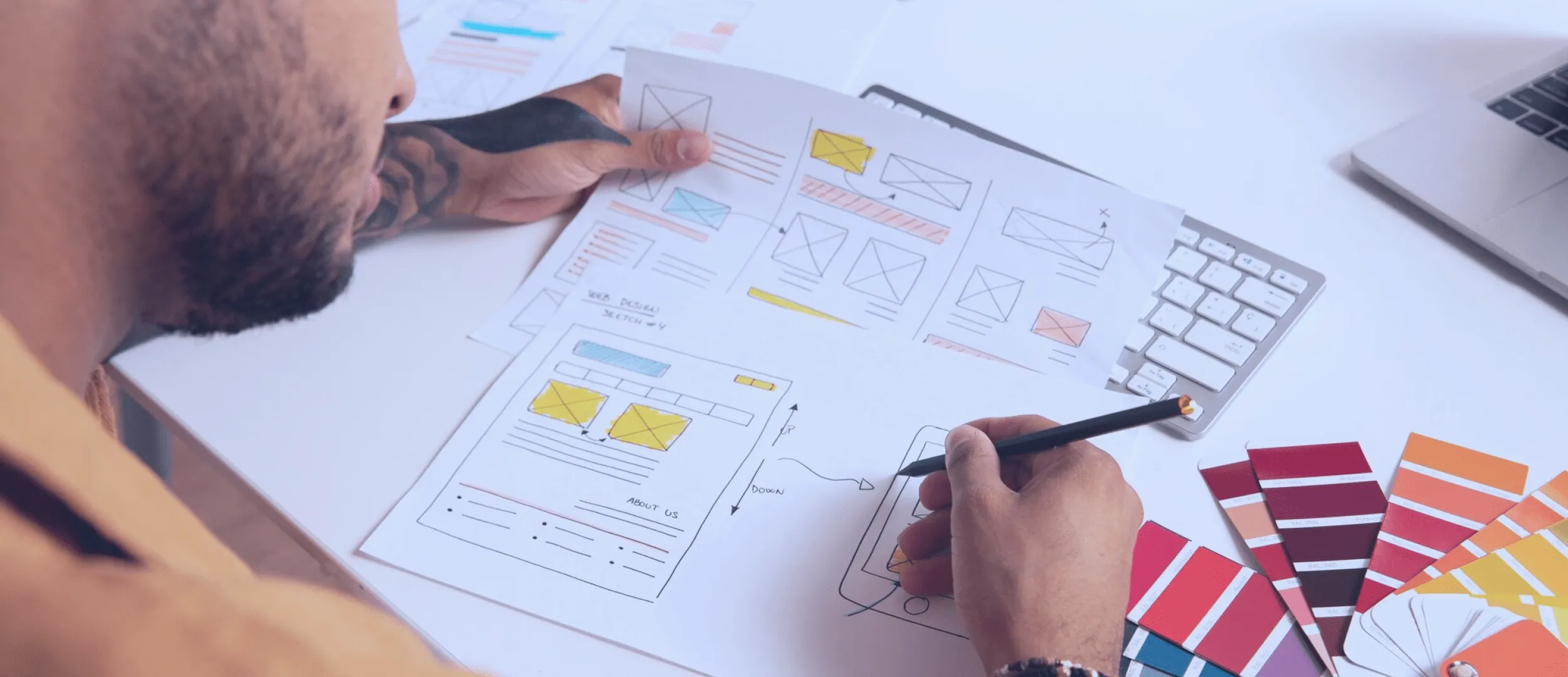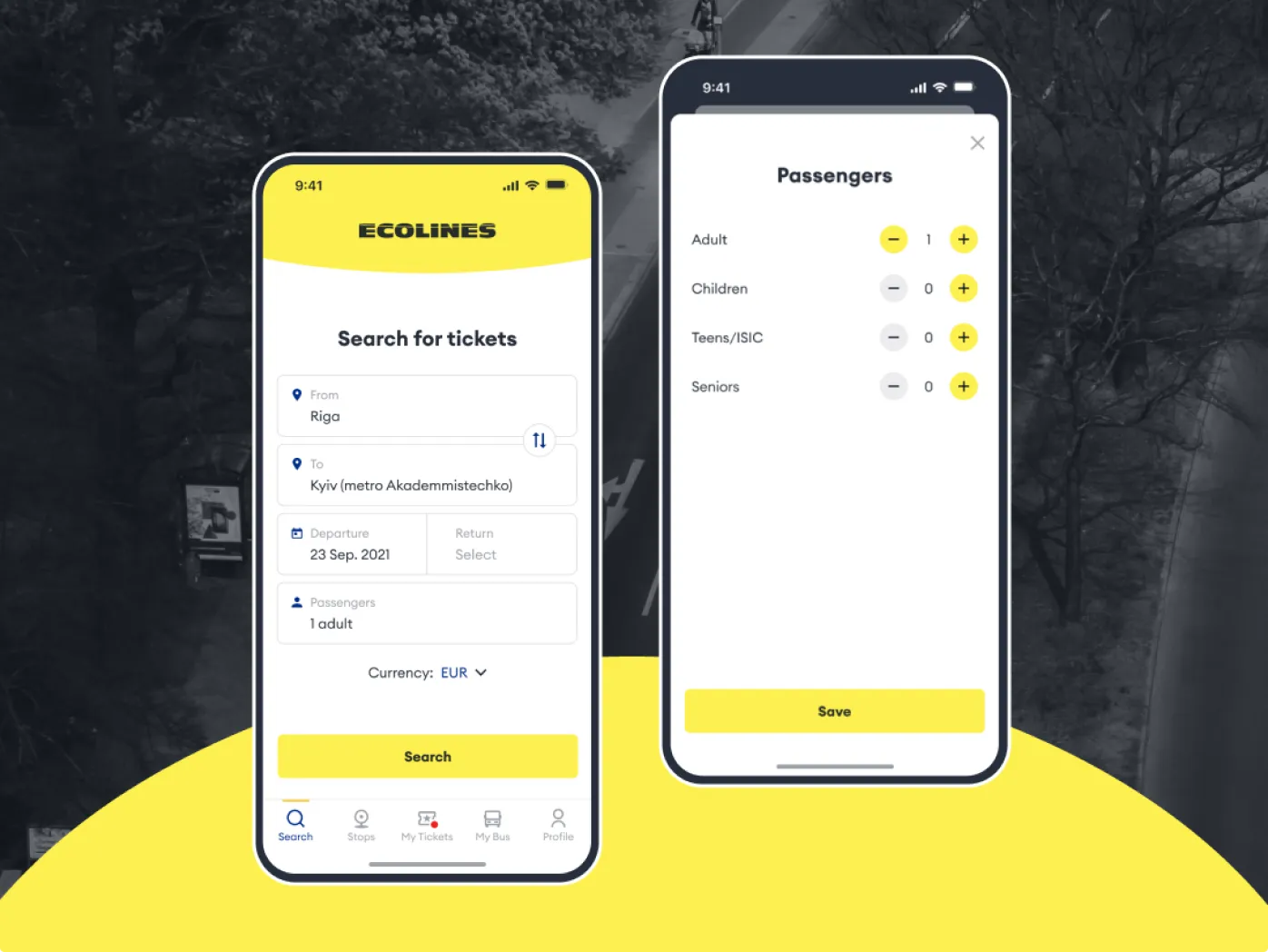
The trends in UI/UX design are volatile and have a short life. Mobile solutions that were trendy a decade ago will seem awkward and outdated today. Fortunately, redesign is the answer and the means to turn a new leaf in the lifecycle of your product.
That’s why our team as experienced software developers, who have witnessed the design trends pass and go, want to discuss how to redesign an app. The mobile app redesign is often not only about visual changes. The existing technologies constantly progress, while new ones appear. So it’s critical to keep your digital products up-to-date to stay competitive. That’s why redesign often comes with app functionalities enhancement and new features adding.
Let’s look into the key signs and reasons that can prompt you to breathe new life into your piece of software.
Main Reasons for the App Redesign
If you are an entrepreneur, who has developed an app, nurtured it from the very idea, launched it, and is gaining benefits already, you risk getting blind spots. On the one hand, you treat your product as a parent, and it makes you blind, on the other hand, it will always be difficult for you to judge it with an unbiased eye of a user.
So, you may miss the moment when your mobile app needs a redesign. There are some hints and metrics that can prompt you when the time has come for a makeover. To know more details, just go on reading.
Metrics dropping down
There are certain critical metrics you should specifically follow. They are conversion, adoption rates, and retention, keep your eye also on churn rates, DAU (daily active users), MAU (monthly active users), and LTV (lifetime value). If the results for the basic metrics are low, and you notice an increased abandonment, consider this is the sign. Quite possibly, your app needs a redesign.
Your users might experience certain friction during the app usage. Maybe the interface is cluttered, certain buttons are out а their reach, or some elements are not functional. The users move away from the solutions where they face difficulties with UX.
Want a web app that does more?
Let's build a solution that's smart, sleek, and powerful.
Alina
Client Manager

Company rebranding
In course of the time, lots of businesses grow, change their concepts, and sometimes lose their initial identity. Sometimes business rebranding includes massive changes: different color schemes, new logos, icons, and even elements.
When rebranding a logo or printed promotional materials, you should not stop at this point. To preserve consistency, all the company’s products need to be rebranded. Application design should not fall out of the context. Even though your audience remains the same and the user experience is unchanged, design heredity and associative flow between a company and its solutions are critical.
Outdated interface
New technologies bring new requirements. If your app was designed some time ago, the technologies it’s built on may be outdated. It might cause you trouble with adding new features and problems to match the layout to the new OS’s guidelines.
IOS, for instance, always adds new functionality and design guidelines when releasing an update. So, to provide the app’s seamless operation and to enhance UX, you should change your mobile solution design from time to time.
App updates
When creating a mobile solution, you should keep in mind the future growth of the audience. To match the growing number of users, the app should be compatible with new devices and the latest trends, so it requires regular updates. Your solution should be quick to load, scalable, and adapt to different screen sizes. Besides, it should not be cluttered with images or overloaded with content.
When an App Redesign Isn't Needed
Though redesign may now seem to be an answer to all your problems, with poor app performance it’s not so. There are cases when it should be avoided and we are going to look into them.
A redesign might not be the most suitable solution, when:
It doesn’t solve the app’s core problems
If your digital product issues extend beyond its design, a redesign will fail to address the main problems that set in. It may become a band-aid solution, but won’t solve fundamental flaws of functionality, for instance.
Your resources are limited
With the technological development, the costs and efforts needed to redesign an app may be quite sensitive. If your ROI is vague and the investments outweigh the benefits, it’s better not to plug into this matter.
The focus is short-term
If you just want to make your app cool, add up trendy animations, or turn it into something outstanding that will pop, it’s better to think it over again. The redesign for the sake of redesign or just for aesthetic reasons won’t do. You should always consider functionality improvements and long-term usability. So, the task of redesign is not purely a designer’s job but should involve the whole development team.
The target audience is not considered
Don’t try to blindly follow new market trends just for the fashion’s sake. Always keep a friendly and intuitive UX with respect to your target audience. If your users are primarily respectful middle-aged business people, they are unlikely to see the modern trends aimed at the young public.
The product is market-irrelevant
Sometimes market demands change or shift and certain software solutions decline in popularity. Redesign won’t solve your problems in this case, a careful market study should be conducted to understand the market's new trends, and the complete app concept reconsideration is required with the following design and development of a new product.
However, if at this point you realize you really need a redesign of your app, let’s speak about how to change the app design and avoid mistakes.
Top Mistakes When Redesigning Your Mobile Application
To successfully overhaul your software product you should avoid the common mistakes. Some of the most widespread are
Lack of user insights
You should be all ears when communicating with your target users to clearly understand their needs and pains. You can fine-tune the product to their needs and address the root problems only when you have rediscovered the audience and got proper feedback from them.
Overlooking usability testing
Usability tests are a must for validating the consistent performance of the redesigned app. Skipping this step can potentially lead to user frustration if they face poor software functionality.
Poor communication
To manage user expectations, you should arrange clear and effective communication with your users. It will not only help you understand their needs but also explain to them the reasons behind the redesign to avoid confusion or frustration on their part.
How to Properly Prepare for the App Redesign Process
As soon as you have realized you really need the app redesign and it’s justified, you need to prepare for it to be properly realized. You need to define what should be changed and what, on the contrary, should not be left unchanged. A serious business app redesign should not be a hurry-scurry.
Check some tips to make the process smooth and effective:
- Brush up your UI/UX industry trends awareness,
- Consider the app’s functionality: will the features remain the same or not,
- Set up deadlines and choose the day of the desired release,
- Discuss with stakeholders,
- Choose how you will realize it: with your company resources or expert development team,
- Secure a realistic budget for the required expenses,
- Select a responsible person,
- If you hire developers – choose a trustworthy vendor for the purpose.
No matter what your decision is, to redesign by yourself or with a professional team, you should be aware of how the process goes. It will help you remain in the context of the progress. Let us draw your attention to it for the most positive outcome.
A Step-by-step Process of Mobile App Redesign
Think about the reason for rebranding. Is it an overloaded UI? Is the app outdated? Or do you want to become trendier and more competitive? The insights at this stage can already be a game-changer.
Market research
A good beginning is half the battle, so you need to be well-prepared and clearly understand the goals of your redesign. To get to the top of ratings, your software solution should offer some unique value to the users. Market research is a workable means of finding out how you can gain an edge over competitors, so conduct a market study. The main aspects to pay attention to are brands, users, and competitors.
Analyze what makes certain brands outperform their rivals, what are the voices of popular products, and how the users perceive them. Identify the design trends that currently dominate and notice good moves that can be implemented in your new product.
Check customer behavior with Google Analytics and find out how people interact with the user interface and its elements. Based on this data, you can spot the areas for upgrading. Check also the key pains the audience in your niche has and think about the solution to offer.
Inspect the best practices in your industry to implement and the competitor failures to avoid them.
Study customer feedback
This is also a part of research, that can provide you with tons of insights if done right. Study the quantitative facets you have - stats on in-app usage and engagement. Find out which blocks are visited most often, which ones are closed immediately, and on which ones users spend a lot of time. Possibly critical blocks for business are skipped by your audience due to jumbled content, poor illustrations, incomprehensible descriptions, etc.
Then, proceed to reviews on Google Play and the App Store, and check social networks and customer surveys. In-app surveys are by the way an effective means to find out the real state of things and the true level of user satisfaction. It’s vital to keep communication channels open and promptly react to the feedback. Your prompt listening and reaction will motivate and engage the audience to share their experiences with your app. It can bring you some fascinating trends and insights.
Develop UI/UX design
At this step, you should create your UI/UX design just like before the first app iteration. Yet, before prototyping and wireframing, you should develop a new concept supporting your new identity visually. Make sure a new interface still bears strong association with your brand in the tone of voice, color scheme, visual elements, etc. Make your redesign transformational with a lasting impact on your audience, your business, and your brand.
Test the new interface
This stage is aimed at detecting UX flaws and gaps. UI/UX testing helps to eliminate inaccuracies of the interface in general, figure out incorrect displaying on some devices, etc. A/B tests and life scenarios are created for this purpose.
Do the coding job
When the stages of design and testing are finished, developers start working on the projects’ codebase. Frontend developers go without saying, and backend experts are involved depending on the necessity to add new features. At times a complete makeover from scratch is required, and then the whole team works on the project to speed up a redesigned solution launch.
Monitor user response upon launch
With the launch of a new product, even though it has shown success, the work does not stop. The app requires support and maintenance and you should conduct a post-release comprehensive analysis. So, find out the number of registrations or signups, active daily/weekly/monthly users, engagement, retention, and conversion rates. Don’t forget to ask for user feedback directly.
All these combined will make a new start for your app refinement in the future. Based on the gathered data, you can release further iterations with design fixes and craft a more user-oriented software solution in general.
We are now proceeding to the most burning question in any project.
How Much Does App Redesign Cost?
The question of budget is critical for every client, but in the case of redesign, it often becomes decisive as to the time and scope of work. There are a lot of facets that you need to consider, and there are no two similar changes. Every business and every software solution requires their individual variations on how to redesign an application.
However, if you keep the aspects from a small checklist below in mind, the picture will become a bit clearer.
- Decide if you need just a new skin, a new interface, or a total revamp.
- Check if the desired changes impact the technology and to what extent. It will help you figure out the technical support that you will require.
- When the details above are clear, audit your inner resources, if you have specialists to realize the project or if you need to outsource.
Depending on the complexity, functionality, ways of cooperation, and specifics of your software, the redesign cost may vary from US $ 3,000 to $100,000+. A simple redesign will touch upon the basic layout and minimal features, while advanced projects deal with a high level of complexity and advanced features.
Stfalcon's Experience in Redesigning Apps
Most companies prefer to outsource because they realize it’s better to focus on business processes and trust development aspects to professionals.
Stfalcon has carried out a number of redesign projects for clients, and it’s always rather a thrilling experience to breathe new life into a piece of software.
Stfalcons worked on an app redesign for Smilefood, a well-known food delivery company in Ukraine. The client turned to us for a redesign because of the failures of the existing app functionality during operation and after every upgrade. In fact, the mobile solution duplicated the site and was not very engaging.
As a result, Stfalcon’s team crafted the app design for iOS and Android, adapted it to the native elements, worked out the migration plan to the new backend with clients’ base synchronization, and worked over many little cases to speed up development in the future.
Another redesign project we are going to share is for Ecolines, one of the largest and most experienced European coach operators. The task was to do a complete redesign and, based on it, develop new apps from Scratch.
The existing solutions were outdated and contained lots of technical bugs often reported by the users. The project resulted in the development of modern Ecolines and Autolux applications, with 99% of bug-free users. We preserved the branding and business side of the project to the delight of our client.
Conclusion
We can now compare a redesign to a journey, that requires thorough preparation, a talented team on board, and the right time chosen to make it a success. Be realistic in defining your timeline and make sure to follow the most up-to-date standards of software development.
As experts in this field, we can assure you that careful planning and the right choice of experts can guarantee you a positive outcome. If you are now sure you need a redesign and ready to start this journey, contact our expert right now to discuss the details and put away all the concerns. Stfalcon will gladly keep you company on this way. We can help you create the best version of your app that will serve your users and help you to achieve the most ambitious business goals.
FAQs about How to Redesign an App
What role does UX play in the app redesign?
By studying the up-to-date UX trends and implementing them in your app’s visual solutions, you can keep your audience loyal. Analyzing the existing UX, you can detect the drawbacks of your app design. UX audit will prompt you on what interface elements need enhancement and can make your software solution more effective and successful. Bear in mind that you should analyze your UX from the customer’s point of view to define their pains and address them during redesign.
How long does an app redesign typically take?
This question is as vague as the one about the budget. App redesign time depends on the complexity of the work. If you want just a slight visual brush-up, it’s one thing. Another question is a complete app overhaul. A simple MVP can и released in around 3 months term, while complex work can take up to a year or more.
Should I redesign the entire app or just parts of it?
We have described the major reasons for creating a new app design above. To understand whether you need a simple redesign or the complex work of changing the UI/UX and certain features, you should conduct a careful audit of your existing solution, its performance, and the present-day market trends. Depending on the results, the scope of changes your product needs will become clearer.

 Read the full case study
Read the full case study
 Read the full case study
Read the full case study


